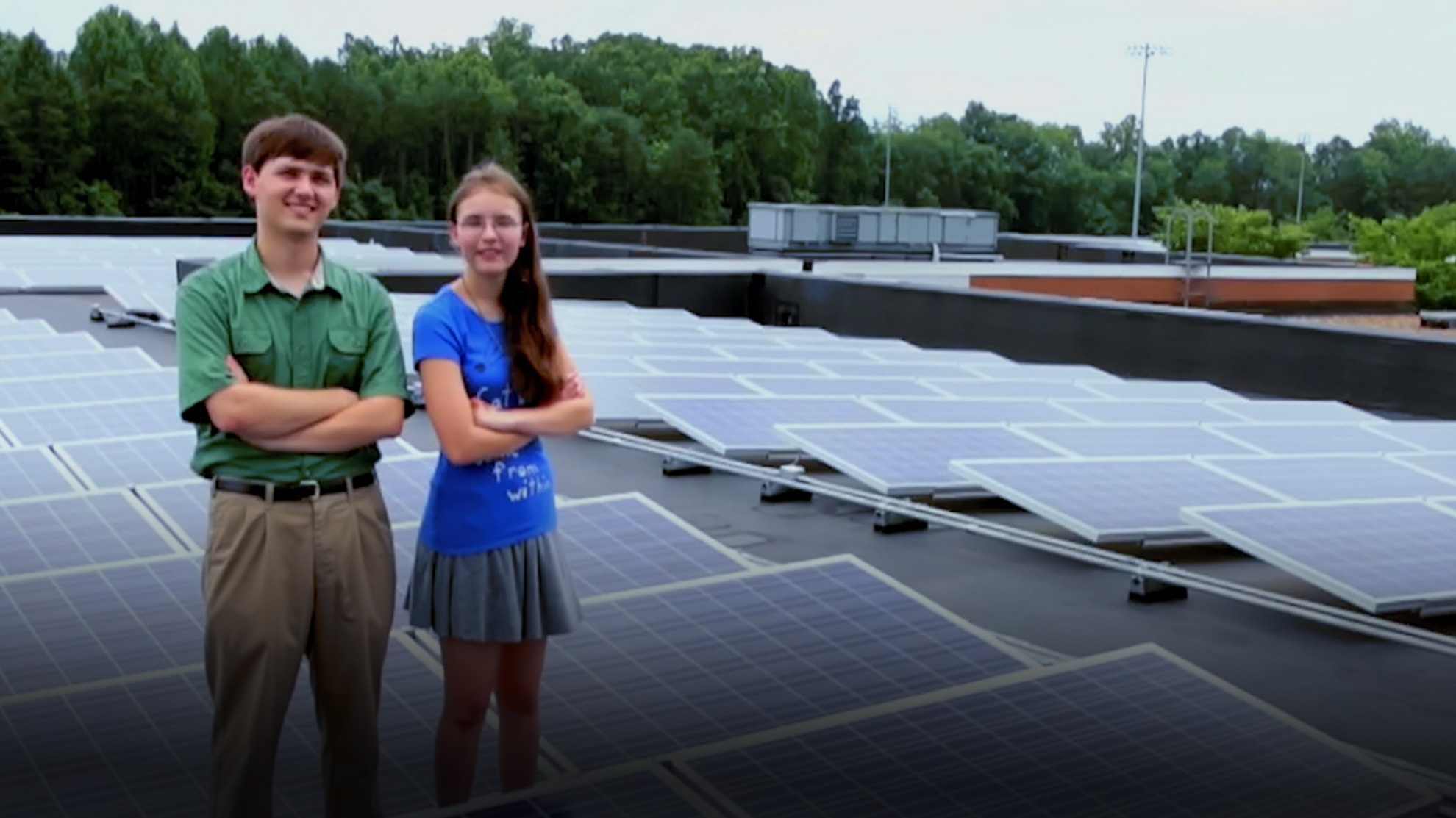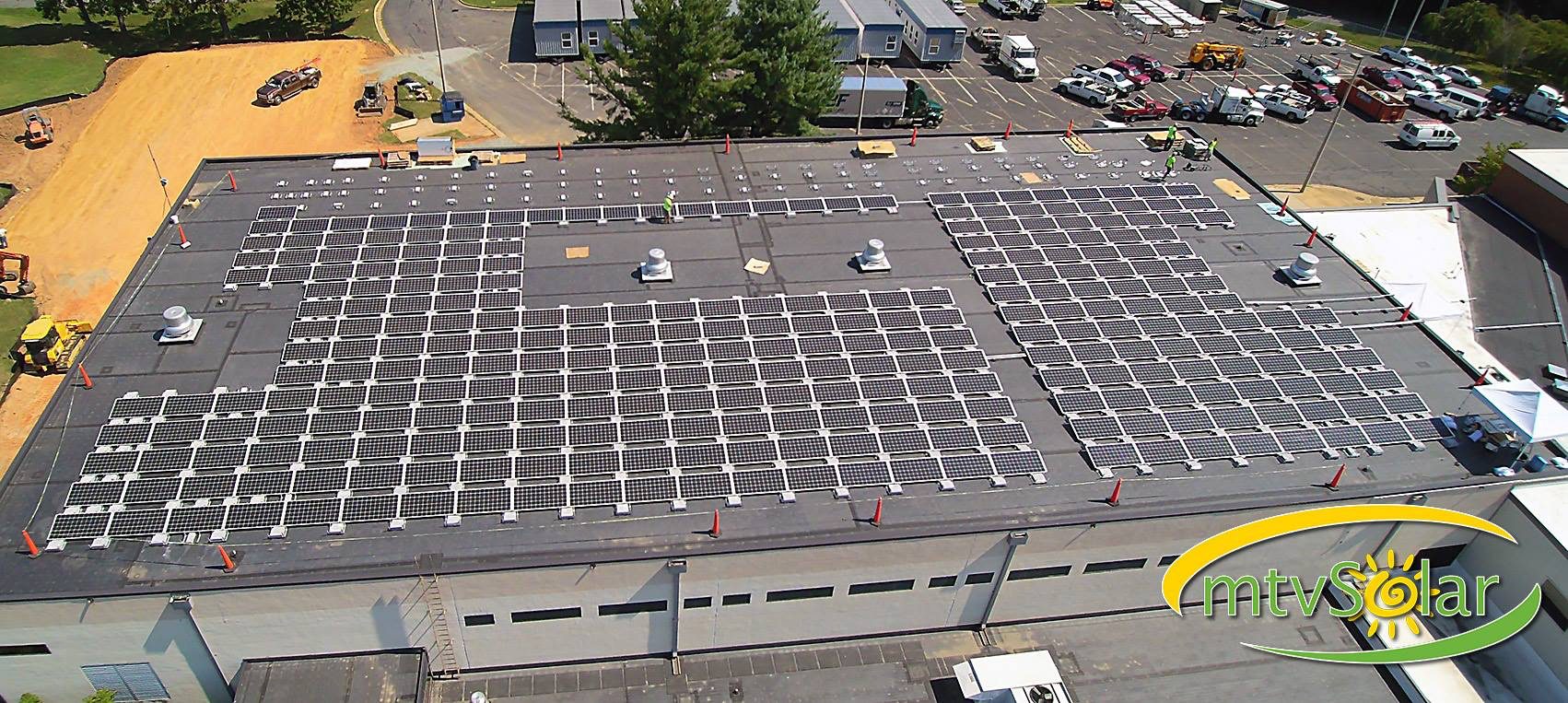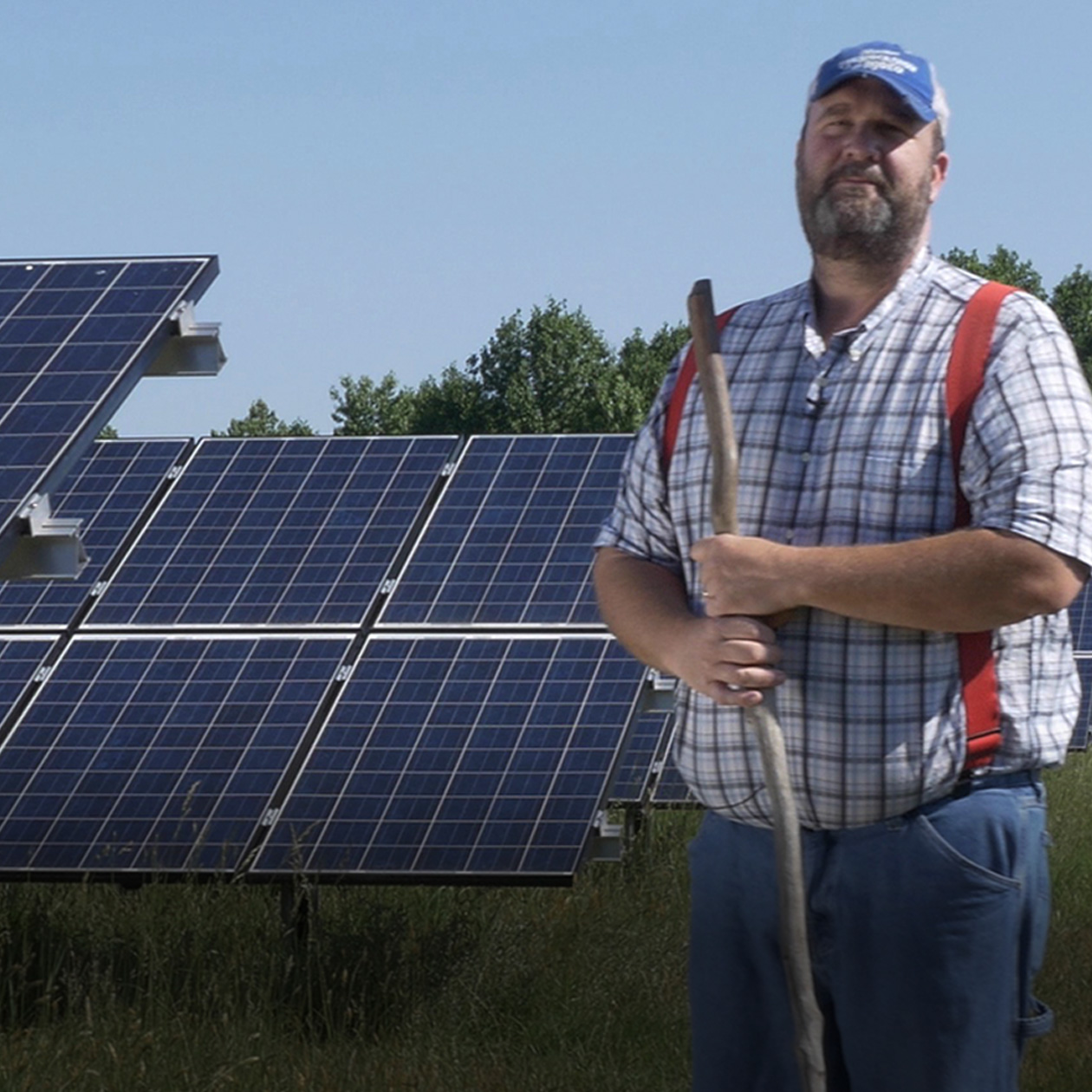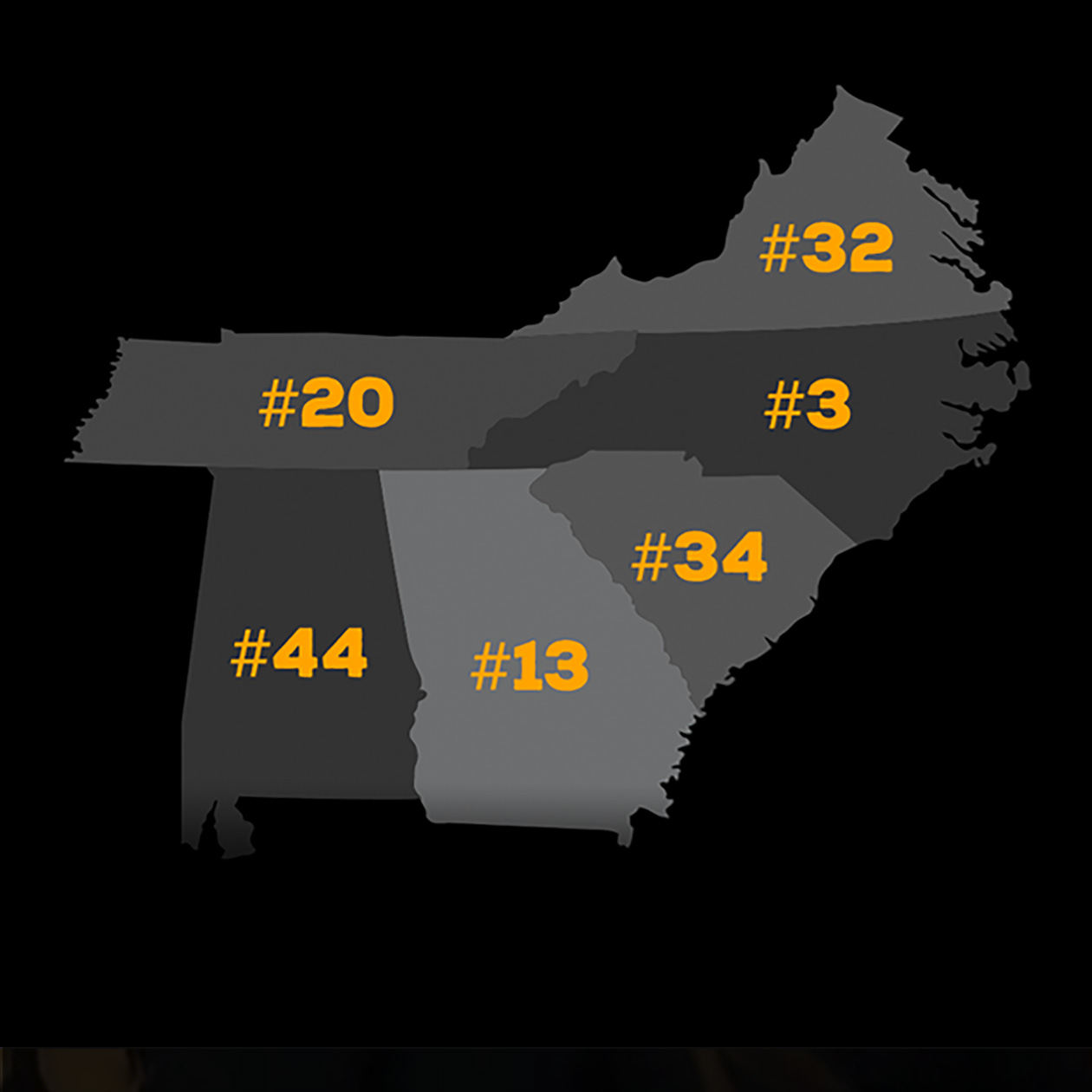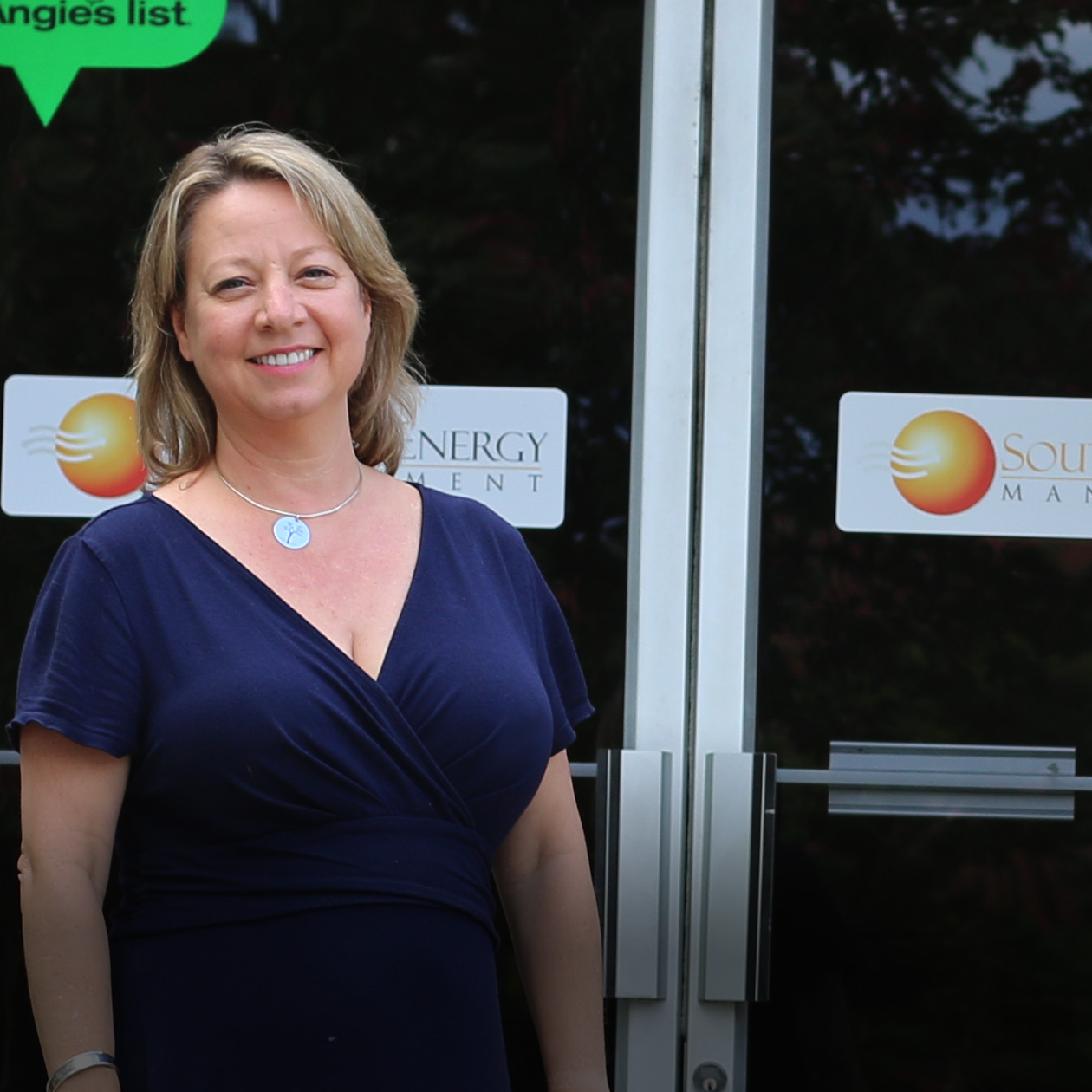Amory Fischer and Elinor Glassco
Amory Fischer can’t hide his bright smile when he speaks about solar energy. And, rightfully so: he’s a former student at Albemarle High School in Charlottesville, Virginia, who helped to found the Solar Schools Initiative.
Growing up in the Piedmont region and in the shadow of the Blue Ridge Mountains, for Fischer, doing his part to preserve the environment is second-nature.
“Hiking trips and going canoeing: that’s what gave me a deep respect for the natural world,” he recalls.
Fischer began looking into solar when he was a sophomore in high school. The Solar Schools Initiative began in 2013 under Fischer’s guidance and with the help of school colleagues and Lindsay Snoddy, the school division’s Environmental Compliance Manager. Quick to shine light on the the accomplishments and contributions of others before his own, Fischer explains how collaboration fuels the initiative’s success:
“The Solar Schools Initiative is definitely student-powered solar,” Fischer says. “It’s a coalition of hundreds of students across the country—all working toward getting solar power on their schools.”
It’s not just schools and students that recognize the power of solar. In 2013, the Virginia General Assembly voted to support clean energy and movements like Fischer’s, passing legislation allowing local governments, nonprofits, and more to purchase solar power via a third party Power Purchase Agreement (PPA).
PPAs help schools like Fischer’s and other organizations, as they require no upfront investment—just reimbursement for power produced by their solar panels.
With the help of organizations like 350 Central Virginia and the Piedmont Group of the Sierra Club, Fischer’s community members came together to get people excited about the new legislation and the opportunities solar power offers. It worked. They collected hundreds of signatures along the way in support of installing solar panels on local schools.
“Schools are the perfect candidate for solar power. They have huge flat, rooftops that are very unobstructed,” Fischer explains. “They use the energy during the day when the solar power is producing it and they are a high-potential educational resource for thousands of students that go through the school system every year.”
Board members at Albemarle High School agreed. They hired Secure Futures, a Staunton, Virginia-based solar development company where Fischer now works, to install and maintain the school’s solar panels. The company also provides educational opportunities throughout the year, offering solar workshops and year-round resources for teachers.
“So, in terms of savings for the schools, that’ll be about $8,000 a year.” Fischer says. In other words, perhaps even more relatable to growing high schoolers, that’s about 3,137 school lunches.
Other local schools, students, and decision-makers noted those numbers, too: Albemarle County entered into a 20-year solar power purchase agreement with Secure Futures to install solar systems at six additional area schools. Together, Fischer and others have carried the Solar Schools Initiative’s torch to Albemarle and Monticello High Schools, Sutherland Middle School, and Baker-Butler, Brownsville, and Greer Elementary Schools.
A recent graduate from Virginia Tech with a degree in Environmental Policy and Planning, Fischer is joined by his younger sister Elinor Glassco.
“One of my favorite parts of this whole campaign was to see how excited my sister Elinor was at getting involved,” Fischer says. “It makes me really proud to know that the four years I put into this campaign is culminating in her being able to have the panels on her high school.”
Fischer doesn't have to worry about the program's future, his five years of hard work, or his legacy. With Albemarle County’s 20-year solar agreement, Secure Futures estimates that the school system will save an impressive $80,000. And, by using solar energy, Albemarle High bypasses 18,680 metric tons of carbon pollution they would otherwise emit over the course of that timeframe.
With six schools participating in the Solar Initiative, the company also estimates that one megawatt of solar will be produced—enough to power 125 average American homes.
“If there are more schools getting solar panels, then students will be able to learn about them and learn about more forms of energy—way better than reading in a book,” Glassco says, smiling.

